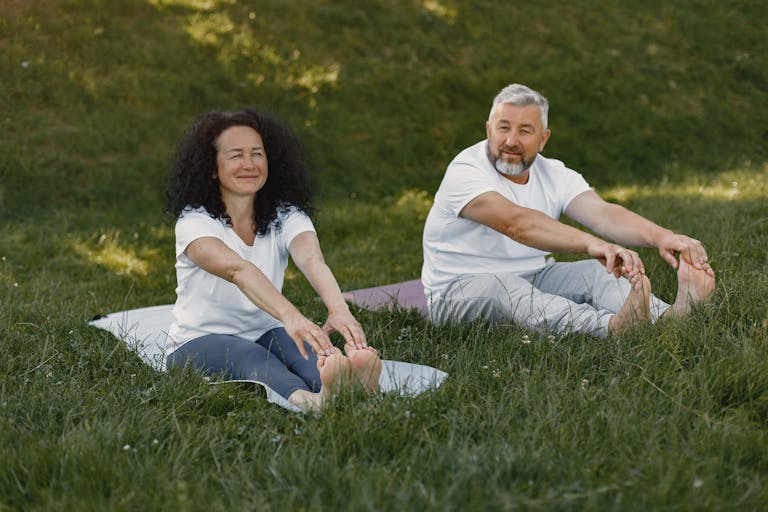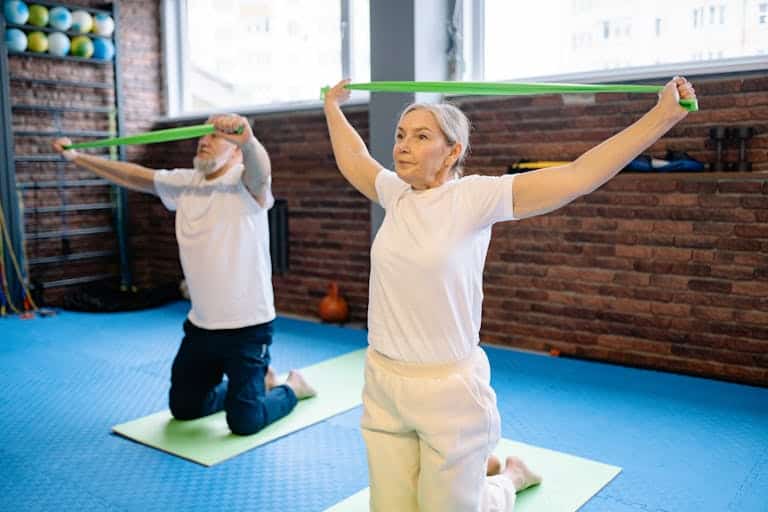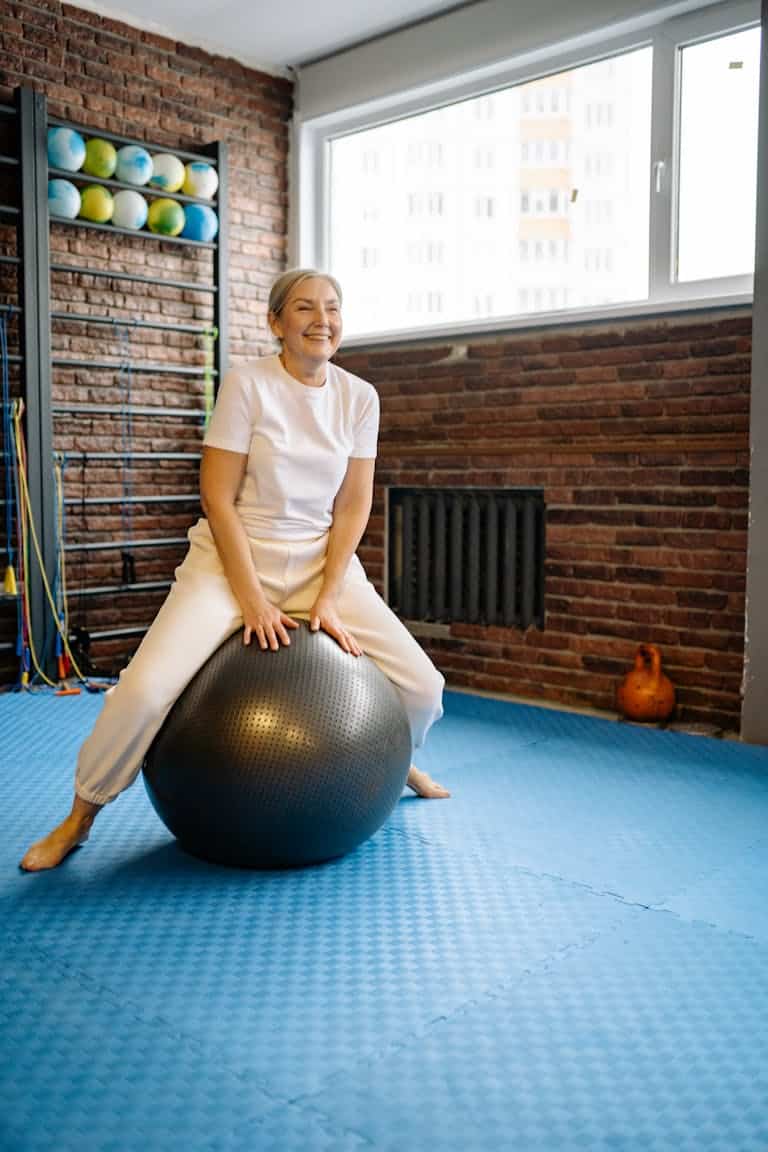Unlock Your Health Potential: The Power of Meditation for Diabetes Management
Disclosure: My rankings are meticulously crafted using advanced algorithms that analyze a vast number of customer reviews, assessing everything from product quality and brand reputation to customer service and popular trends. While these rankings are based on my independent evaluations and intended to serve as a helpful starting point for your shopping journey, it’s worth noting that by purchasing through my recommendations, you’ll access the best prices I’ve found. Additionally, I may earn a commission at no extra cost to you, which supports my ability to continue offering valuable insights.
Table of Contents
Introduction
Welcome to a journey where we explore the incredible benefits of meditation for managing diabetes!
Did you know that incorporating mindfulness practices into your daily routine can significantly improve your physical and emotional well-being?
As we delve into the world of meditation, we’ll uncover how this ancient practice can help regulate blood sugar levels, reduce stress, and promote a balanced lifestyle.
Whether you’re new to meditation or looking to deepen your practice, this guide will provide you with valuable insights backed by recent research.
Let’s begin our exploration of the body-mind connection and discover how meditation can be a transformative tool for diabetes management!
The Science Behind Meditation and Diabetes
I remember the first time I heard about meditation’s impact on diabetes management. It was at a wellness retreat, and the speaker mentioned how mindfulness could help regulate blood sugar levels.
My initial reaction was, “How can sitting quietly with my thoughts do anything for my blood sugar?”
But, as someone who’s always up for trying new things, I decided to dig a little deeper. Spoiler alert: it’s more impactful than you might think!
You see, our minds and bodies are intricately connected, and this connection plays a significant role in managing diabetes. It’s all about stress and how our bodies react to it. When we’re stressed, our bodies release a hormone called cortisol, which can cause blood sugar levels to spike.
For someone managing diabetes, this can be a real headache. So, it made perfect sense when I stumbled upon a study by Hamasaki (2023), which found that mindfulness-based interventions significantly improved glycemic control in people with diabetes. The participants who regularly practiced mindfulness had lower HbA1c levels, indicating better long-term blood sugar control.
Now, I know what you might be thinking: “But I don’t have time to meditate!”
Trust me, I’ve been there. Between work, family, and just trying to catch a decent amount of sleep, carving out time for meditation seemed impossible.
But the beauty of mindfulness is that it doesn’t have to take hours. Even a few minutes a day can make a difference.
I started with just five minutes in the morning, focusing on my breath and letting go of the stress from the previous day. It was a small change, but it felt like hitting the reset button.
Another study by Armani Kian et al. (2018) caught my attention. It highlighted how meditation, particularly mindfulness-based stress reduction (MBSR), could significantly improve emotional well-being in individuals with diabetes. The study participants reported feeling less anxious and depressed, which is a big deal because emotional health is so closely tied to physical health.
I mean, who hasn’t had a rough day and found themselves reaching for comfort food? It’s a cycle, right? Feeling down can lead to poor food choices, which can mess with blood sugar levels, making you feel even worse. It’s a vicious cycle, but meditation can be a game-changer.
One of the most relatable experiences for me was when I started noticing how much more aware I became of my emotions. Instead of getting caught up in them, I learned to observe them like passing clouds.
It’s like having a superpower where you can press pause and not react impulsively. This newfound awareness helped me make better choices, not just in what I ate but in how I responded to daily challenges.
It’s not perfect—I still have my moments—but it’s a step in the right direction.
Incorporating meditation into your diabetes care plan doesn’t have to be a grand gesture. Start small, be consistent, and be kind to yourself. It’s about creating a space where you can connect with yourself and manage your health more mindfully. And hey, if someone as easily distracted as me can stick with it, you can too! So, let’s give meditation a shot—not just as a way to relax, but as a powerful tool for managing diabetes and enhancing our overall well-being.

How Mindfulness Reduces Stress and Improves Blood Sugar Levels
When I first started exploring mindfulness, I was skeptical about its impact on my stress levels and overall health. I mean, we’ve all been told to “just relax,” but it’s not exactly easy when life feels like a never-ending to-do list. But here’s the kicker: stress isn’t just a mental game—it can mess with your body, too, especially if you’re managing diabetes.
Let’s talk about the physiological effects of stress on blood sugar. When we’re stressed, our bodies go into fight-or-flight mode, which is great if you’re facing a saber-toothed tiger, but not so much in a modern-day office. This response triggers the release of cortisol and adrenaline, which raise blood sugar levels to give you a quick energy boost. It’s a survival mechanism. But for someone with diabetes, this spike in blood sugar can be problematic. It’s like your body’s stress response is stuck in overdrive, causing your blood sugar to surge and making it harder to manage.
So, how does mindfulness meditation come into play? Mindfulness is all about being present and aware of your thoughts, feelings, and sensations without judgment. It sounds simple, but it’s a powerful tool. When you practice mindfulness, you’re training your brain to handle stress more effectively. Instead of reacting to stressors with anxiety and tension, you learn to observe them without letting them take over. This helps lower cortisol levels, which in turn can help stabilize blood sugar levels. It’s like giving your body a mini-vacation from stress, even if just for a few moments.
Incorporating mindfulness into daily routines doesn’t require you to become a monk or spend hours meditating. Trust me, I’m all about practical solutions, especially when life gets busy. Here are a few easy ways to bring mindfulness into your day:
- Start with Breathing Techniques: This is my go-to, especially during those hectic days. A simple technique is the 4-7-8 breathing method. Inhale through your nose for four counts, hold for seven, and then exhale through your mouth for eight counts. This exercise not only calms your nervous system but also brings your focus to the present moment. It’s like hitting the pause button on your stress.
- Practice Body Scans: This is a great way to check in with yourself and release tension. Lie down or sit comfortably, close your eyes, and slowly bring your attention to different parts of your body, starting from your toes and moving up to your head. As you focus on each area, notice any sensations, tension, or discomfort. The idea isn’t to change anything, but just to observe. This practice helps you become more aware of your body’s responses to stress and can be surprisingly calming.
- Mindful Moments: You don’t need to set aside a special time for mindfulness. Try incorporating it into everyday activities. For example, when you’re eating, really focus on the flavors, textures, and smells of your food. Or, during a walk, pay attention to the sensation of your feet on the ground, the breeze on your skin, or the sounds around you. These little moments of mindfulness can add up and make a big difference in how you handle stress.
I’ve found that making these small changes has helped me feel more centered and less reactive. It’s like building a muscle—the more you practice, the stronger your response to stress becomes. And the benefits aren’t just mental. Many people, including myself, have noticed more stable blood sugar levels, better sleep, and an overall sense of well-being.
So, if you’re looking for a way to manage stress and improve your blood sugar levels, why not give mindfulness a try? It’s a simple, no-cost way to take control of your health. And hey, in a world full of chaos, who couldn’t use a little more peace and calm?
The Role of Meditation in Emotional Well-Being for Diabetes Patients
Living with diabetes can sometimes feel like riding an emotional rollercoaster. There are highs and lows, moments of frustration, and times when it all feels overwhelming. For many, the daily management of blood sugar levels, diet, and medication can lead to a constant undercurrent of anxiety or even depression. But here’s the thing—you’re not alone in feeling this way, and there are tools, like meditation, that can help navigate these emotional challenges.
One of the most common emotional struggles for individuals with diabetes is the sense of being constantly vigilant. It’s easy to feel like you’re walking a tightrope, trying to balance everything perfectly to avoid complications. This can lead to burnout, a state where managing diabetes feels exhausting and relentless. I remember talking to a friend who described her experience as a constant background noise that never really shuts off. She felt trapped by the need to monitor her condition constantly, which only added to her stress and anxiety.
Meditation can be a game-changer when it comes to fostering resilience and emotional stability. At its core, meditation teaches you to sit with your thoughts and emotions without getting swept away by them. It’s not about blocking out negative feelings but rather observing them with a sense of detachment. This practice can help you develop a healthier relationship with your emotions, making it easier to handle the ups and downs of living with diabetes.
I once read about a woman named Sarah, who found meditation to be a lifeline after her diagnosis. She described herself as a “worry wart” before discovering mindfulness. Meditation didn’t magically make her worries disappear, but it gave her a way to process them without spiraling. She started with guided meditations focused on breathing and gradually incorporated mindfulness into her daily routine. Sarah shared that after a few months, she noticed a significant shift in how she handled stress. She felt more grounded and less reactive to the fluctuations in her blood sugar levels.
Another powerful aspect of meditation is its ability to cultivate self-compassion. It’s easy to be hard on yourself when things don’t go perfectly, especially when managing a condition like diabetes. But meditation encourages a kinder, more forgiving attitude toward yourself. It’s about acknowledging that you’re doing your best, even on the tough days. This shift in perspective can alleviate the emotional burden of perfectionism, which is a common issue among people managing chronic illnesses.
Take John, for example. After years of feeling like he was failing at managing his diabetes, he started a meditation practice focusing on self-compassion. He described it as a revelation. For the first time, he allowed himself to acknowledge the effort he was putting into his health without immediately criticizing himself for not being perfect. This practice helped him accept his condition and the reality that some days would be better than others. It didn’t make the challenges disappear, but it changed how he related to them, fostering a sense of peace and acceptance.
Meditation also provides a safe space to explore and understand the emotional complexities of living with diabetes. It helps in recognizing patterns in emotional responses and offers a chance to break free from automatic reactions. Over time, this awareness can lead to a more balanced and less stressful life, as you’re no longer reacting to every change in your condition with fear or frustration.
In summary, meditation is a powerful tool for enhancing emotional well-being among diabetes patients. It helps address common emotional challenges, fosters resilience and emotional stability, and provides a framework for cultivating self-compassion. The stories of Sarah and John are just a couple of examples of how meditation can transform the emotional landscape for those managing diabetes. By creating a space for calm and reflection, meditation can make the journey a bit smoother, offering a sense of control and peace amidst the daily challenges.

Mindful Eating: A Key Component of Diabetes Management
Let’s talk about food, one of life’s great pleasures but also a complex part of managing diabetes. For many of us, eating can become a mindless activity, especially when we’re busy or stressed. We’ve all been there—munching away while watching TV, barely tasting the food, or grabbing a quick bite while running out the door. But when you have diabetes, this kind of eating can make it harder to manage blood sugar levels. That’s where mindful eating comes in, offering a way to enjoy food fully while making healthier choices.
The Concept of Mindful Eating and Its Benefits
Mindful eating is about bringing your full attention to the experience of eating. It’s not just about what you eat, but how you eat it. This practice encourages you to savor each bite, noticing the flavors, textures, and even the sounds of your food. By being present during meals, you can better recognize your body’s hunger and fullness cues, which can prevent overeating—a common issue for many.
One of the main benefits of mindful eating is that it helps break the cycle of emotional eating. We often turn to food for comfort during stressful times, but this can lead to unhealthy eating patterns. By practicing mindfulness, you become more aware of why you’re eating and can make conscious choices rather than just reacting to stress or emotions. This awareness can be particularly empowering for people with diabetes, as it helps maintain better control over blood sugar levels.
Techniques for Practicing Mindful Eating During Meals
Incorporating mindful eating into your routine doesn’t have to be complicated. It’s about making small, intentional changes. Here are some practical techniques to get started:
- Slow Down: One of the simplest ways to eat mindfully is to slow down. Take smaller bites and chew thoroughly. This not only aids digestion but also gives your body time to register when you’re full. Try putting your fork down between bites and savoring the flavors. It might feel strange at first, but it’s a great way to become more aware of your eating habits.
- Eliminate Distractions: We’ve all had meals in front of the TV or while scrolling through our phones, but these distractions can lead to mindless eating. Instead, focus on your meal. Pay attention to the taste and texture of each bite. This can make your meals more enjoyable and satisfying, and you might find that you don’t need to eat as much to feel full.
- Listen to Your Body: Mindful eating is also about tuning in to your body’s signals. Ask yourself if you’re truly hungry before reaching for a snack. Are you eating because you’re hungry, bored, or stressed? By understanding the difference, you can make more intentional choices about when and what to eat. This awareness is particularly helpful in avoiding unnecessary snacks that can spike blood sugar levels.
The Impact of Mindful Eating on Dietary Choices and Blood Sugar Control
Mindful eating can have a profound impact on dietary choices and blood sugar control. By paying attention to what and how much you’re eating, you become more aware of the quality of your food. You might notice that you naturally gravitate towards healthier options, like fresh fruits, vegetables, and whole grains, because you’re more in tune with how different foods make you feel. For instance, I once discovered that a heavy, carb-laden lunch left me feeling sluggish and affected my afternoon energy levels. By paying attention, I started opting for lighter meals with balanced nutrients, which made a noticeable difference in my overall well-being and blood sugar stability.
Another benefit is that mindful eating can help you develop a better relationship with food. It encourages you to enjoy the act of eating and appreciate your food, rather than seeing it as a mere necessity or, worse, a source of guilt. This positive relationship can lead to more consistent blood sugar levels, as you’re more likely to make choices that support your health.
In my experience, mindful eating has been a game-changer. It transformed the way I think about food and helped me feel more in control of my diabetes management. It’s not about perfection but progress—making small, mindful adjustments that lead to big improvements over time.
So, the next time you sit down for a meal, try practicing mindful eating. Enjoy each bite, savor the flavors, and listen to your body’s signals. It’s a simple yet powerful way to improve your relationship with food, enhance your dietary choices, and support better blood sugar control. And remember, like any new habit, it takes time and practice, so be patient with yourself and enjoy the journey toward a healthier, more mindful lifestyle.

Yoga and Tai Chi: Complementary Practices for Enhanced Mind-Body Balance
When I first started exploring ways to manage stress and improve my overall well-being, I was drawn to both yoga and Tai Chi. These ancient practices intrigued me with their promise of mind-body harmony, something I desperately needed as life’s daily stresses seemed to pile up. What I found, and what many studies support, is that both yoga and Tai Chi offer profound benefits, not just for mental clarity and physical flexibility but also for managing conditions like diabetes.
Overview of Yoga and Tai Chi as Holistic Practices
Yoga and Tai Chi are holistic practices that focus on connecting the mind, body, and spirit. They are not just exercises; they are philosophies of life that promote balance, health, and inner peace. Yoga, which originated in ancient India, involves a combination of physical postures (asanas), breathing exercises (pranayama), and meditation. It’s all about creating a union between the body and the mind, helping you become more aware and in tune with yourself.
On the other hand, Tai Chi, rooted in ancient Chinese martial arts, is often described as “meditation in motion.” It involves slow, deliberate movements coupled with deep breathing. Unlike yoga, which can sometimes feel like a workout, Tai Chi is more about flow and gentle movements. It’s like a slow dance that calms the mind and body, making it accessible for people of all ages and fitness levels.
Benefits of Yoga for Physical and Mental Health in Diabetes Management
Yoga has been a lifeline for me, especially when managing the ups and downs of diabetes. According to Thind et al. (2017), yoga offers significant benefits for both physical and mental health, particularly for those managing diabetes. The study highlights that yoga can help lower blood sugar levels, improve insulin sensitivity, and reduce HbA1c levels. But the benefits don’t stop there. Yoga also helps with stress reduction, which, as we know, is crucial because stress can wreak havoc on blood sugar control.
From a physical standpoint, yoga enhances flexibility, strength, and balance. Poses like the Warrior, Tree, and Downward Dog engage different muscle groups, improving circulation and overall physical fitness. Mentally, the practice of yoga cultivates mindfulness and emotional resilience. The combination of movement and breath work helps calm the nervous system, reducing feelings of anxiety and promoting a sense of well-being.
I remember struggling with stress and feeling like my emotions were constantly on a rollercoaster. Incorporating yoga into my routine helped me find a sense of balance. The breathing exercises taught me to pause and take deep breaths during stressful situations, which has been invaluable in maintaining steadier blood sugar levels. The mental clarity and calmness that come from a regular yoga practice are truly transformative.
How Tai Chi Improves Balance, Flexibility, and Stress Reduction
Tai Chi is another fantastic practice that complements yoga, especially if you’re looking for something gentler. It’s particularly beneficial for improving balance and flexibility, which is important as we age or if we’re dealing with conditions that affect coordination. The slow, graceful movements of Tai Chi help strengthen the legs, improve posture, and enhance overall body awareness. This can be a game-changer for preventing falls and maintaining mobility.
But perhaps one of the most remarkable benefits of Tai Chi is its ability to reduce stress. The practice encourages a meditative state, as you focus on the flow of movements and your breathing. This mindfulness aspect of Tai Chi is incredibly soothing, helping to calm the mind and alleviate stress. For those managing diabetes, reducing stress is key to preventing spikes in blood sugar levels.
I started practicing Tai Chi after a friend recommended it as a way to unwind after a busy day. At first, I was skeptical—how could such slow movements have any impact? But after a few sessions, I noticed a difference. I felt more centered and less anxious. The gentle exercises helped ease the tension in my muscles, and the focus on breathing helped me feel more present and relaxed. It became a peaceful ritual that I looked forward to, especially when I felt overwhelmed.
Incorporating yoga and Tai Chi into my life has been one of the best decisions I’ve made for my health. These practices have provided a sanctuary of calm and a toolkit for managing stress and physical well-being. Whether you’re dealing with the day-to-day challenges of diabetes or just looking for a way to bring more balance into your life, yoga and Tai Chi offer a gentle yet powerful approach to holistic health. They remind us to slow down, breathe, and connect with our bodies, helping us navigate life’s ups and downs with grace and resilience.
Incorporating Meditation into Your Diabetes Care Plan
Meditation can seem intimidating if you’re new to the practice, but it’s a powerful tool that can help manage diabetes. When I first considered meditation, I was overwhelmed by the idea of sitting still and quieting my mind. But as I started, I realized it wasn’t about achieving a perfect state of zen but rather about creating a space for myself to breathe and reset. Here’s a simple guide to help you integrate meditation into your diabetes care plan, whether you’re a complete beginner or looking to deepen your practice.
Tips for Beginners: How to Start a Meditation Practice
Starting a meditation practice doesn’t have to be complicated. The key is to keep it simple and approachable. Here are some tips that helped me ease into meditation:
- Start Small: You don’t need to meditate for an hour right off the bat. Begin with just 5 minutes a day. This is enough time to start feeling the benefits without feeling like a big commitment. Gradually, you can increase the time as you get more comfortable.
- Find a Comfortable Spot: Choose a quiet place where you won’t be disturbed. It doesn’t have to be anything fancy—just a spot where you can sit or lie down comfortably. The goal is to be relaxed, so whether you sit on a cushion, a chair, or even lie on your back, make sure you’re at ease.
- Focus on Your Breath: The breath is a great anchor for your attention. Start by taking a few deep breaths, then allow your breathing to return to its natural rhythm. Focus on the sensation of the breath as it enters and leaves your nostrils, or the rise and fall of your chest. If your mind wanders, gently bring it back to the breath without judgment.
- Be Kind to Yourself: It’s normal for your mind to wander during meditation. When it happens, don’t get frustrated. Just acknowledge the thought and gently return your focus to your breath. Meditation is about practice, not perfection.
- Set a Routine: Try to meditate at the same time each day, whether it’s in the morning to start your day or in the evening to unwind. Consistency helps build the habit and makes it a natural part of your daily routine.
Creating a Personalized Meditation Routine for Diabetes Management
Once you’ve gotten the hang of basic meditation, you can start tailoring your practice to support your diabetes management. Here’s how you can create a routine that fits your needs:
- Morning Meditation: Start your day with a short meditation to set a calm tone. Focus on breathing and set an intention for the day, like staying mindful of your food choices or managing stress more effectively.
- Mindful Check-Ins: Throughout the day, take brief moments to check in with yourself. These mini-meditations can be as simple as taking a few deep breaths before meals or during a break at work. It’s a great way to manage stress and keep your blood sugar levels in check.
- Evening Wind-Down: End your day with a longer meditation session. This can help you relax and release the stresses of the day. You might try a guided meditation that focuses on relaxation or gratitude, helping you reflect on the positive aspects of your day.
- Incorporate Body Scans: A body scan meditation can be particularly useful for diabetes management. This practice involves mentally scanning your body from head to toe, noticing areas of tension and consciously relaxing them. It’s a great way to connect with your body and become more aware of physical sensations, which can be beneficial in managing symptoms.
Resources and Apps to Support Your Meditation Journey
To support your meditation practice, there are plenty of resources and apps available that can guide you, especially if you’re just starting out or looking for variety. Here are some of my favorites:
- Headspace: This app offers guided meditations on various topics, including stress reduction and mindfulness. It’s user-friendly and great for beginners.
- Calm: Known for its soothing nature sounds and guided sessions, Calm also offers meditations specifically designed to improve focus and manage stress. It’s perfect for winding down after a long day.
- Insight Timer: With thousands of free meditations, Insight Timer is a treasure trove of resources. You can choose from different lengths and styles, making it easy to find something that fits your mood and schedule. Plus, it has a large community aspect where you can join groups and discussions.
- MyLife Meditation (formerly Stop, Breathe & Think): This app personalizes meditation recommendations based on your mood and preferences, making it a great choice for tailoring your practice to how you’re feeling each day. It’s like having a meditation coach in your pocket!
- Books and Online Courses: If you prefer reading or structured learning, books like “The Miracle of Mindfulness” by Thich Nhat Hanh or online courses from platforms like Coursera or Udemy can deepen your understanding of meditation. These resources can provide more comprehensive insights and techniques for integrating mindfulness into daily life.
Starting a meditation practice is a journey, and like any journey, it begins with a single step. By incorporating meditation into your diabetes care plan, you’re not only supporting your physical health but also nurturing your emotional and mental well-being. Whether you have five minutes or fifty, each moment spent meditating is a step towards a calmer, more balanced life. So, take a deep breath, find your quiet spot, and begin exploring the benefits of meditation today.
Conclusion
Meditation offers a holistic approach to diabetes management, supporting both physical health and emotional well-being. By reducing stress, improving emotional resilience, and promoting mindful eating, meditation empowers individuals to take control of their health. As the famous mindfulness teacher Jon Kabat-Zinn once said,
“You can’t stop the waves, but you can learn to surf.”
Embrace meditation as a tool for navigating the challenges of diabetes and enhancing your overall quality of life. Start your meditation journey today and unlock the potential for a healthier, more balanced life!
References
- Hamasaki, H. (2023). The effects of mindfulness on glycemic control in people with diabetes: An overview of systematic reviews and meta-analyses. Medicines, 10(9). https://doi.org/10.3390/medicines10090053
- Armani Kian, A., Vahdani, B., Noorbala, A., Nejatisafa, A., Arbabi, M., Zenoozian, S., & Nakhjavani, M. (2018). The impact of mindfulness-based stress reduction on emotional wellbeing and glycemic control of patients with type 2 diabetes mellitus. Journal of Diabetes Research, 2018, Article 1986820. https://doi.org/10.1155/2018/1986820
- Thind, H., Lantini, R., Balletto, B. L., Donahue, M. L., Salmoirago-Blotcher, E., Bock, B. C., & Park, E. R. (2017). The effects of yoga among adults with type 2 diabetes: A systematic review and meta-analysis. Preventive Medicine, 105, 116-126. https://doi.org/10.1016/j.ypmed.2017.08.014







